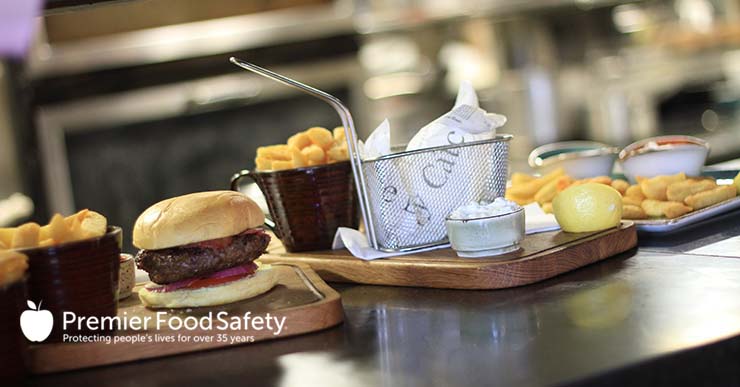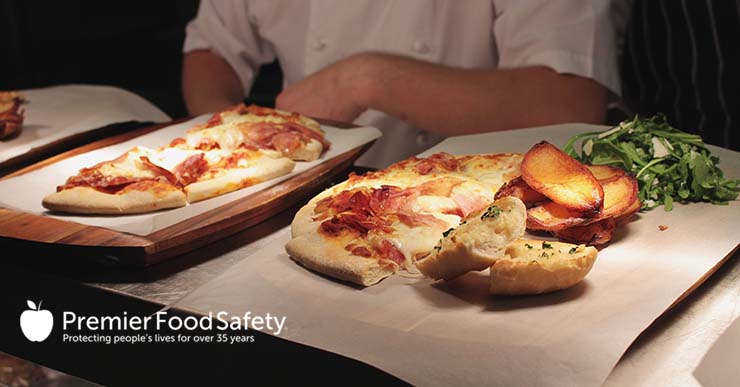Monthly Archives: November 2015
Published November 23, 2015
Thanksgiving Dressing: A Guide
Perhaps no Thanksgiving dish inspires more debate than the mixture of cubed bread, binders, and seasoning that is baked and served as a side. Should it be made with breadcrumbs or fresh bread? Should it contain sausage, or oysters, or nuts? Is it called stuffing or dressing? Eater has an article that discusses one traditional […]
Read More: https://premierfoodsafety.com/blog/thanksgiving-dressing-a-guide/
Published
Remixing Thanksgiving Food
According to a 2013 study by the National Restaurant Association, approximately 79 million Americans will turn to restaurants for at least some of the food they eat on Thanksgiving and Black Friday. With that in mind, restaurateurs across the country have the difficult task of trying to satisfy diners’ cravings for traditional flavors while trying […]
Read More: https://premierfoodsafety.com/blog/remixing-thanksgiving-food/
Published November 20, 2015
Bargaining Power Shifts to Employees in Restaurants
If the holiday season is leaving you stressed out, serene surroundings are just an hour’s drive away from Palm Beach. Sample local fruits and wine from Al’s Red Barn and Endless Summer Vineyard and take a stroll through the nature walks of Fort Pierce Inlet State Park to enter a deep state of relaxation.
Read More: https://premierfoodsafety.com/blog/bargaining-power-shifts-to-employees-in-restaurants/
Published
Different People, Different Beer
The consumer research firm Mintel predicts that the craft beer market will grow 22 percent in the next year. But what sorts of craft beer are people buying? Data from iPourIt sheds light on demographic factors that affect beer preference. According to the data, women tend toward lighter styles than men do, and beer aficionados […]
Read More: https://premierfoodsafety.com/blog/different-people-different-beer/
Published
Food Industry a Leader in Inclusive Hiring
The Human Rights Campaign’s Corporate Equality Index measures whether LGBT workers at U.S. companies are offered the same benefits and protections as their non-LGBT counterparts. The Index, which gives companies a score out of 100, awarded perfect scores to 24 food, beverage, and grocery companies. A representative of the HRC commended food producers and grocery […]
Read More: https://premierfoodsafety.com/blog/food-industry-a-leader-in-inclusive-hiring/
Published November 19, 2015
3 Myths About Green Food
The ecological impact of the foods we eat has become a pressing issue, but with all the misinformation about the topic that has been spread around it can be hard to make smart, informed choices. Local food isn’t always more ecologically-friendly, and neither is farmed fish.
Read More: https://premierfoodsafety.com/blog/3-myths-about-green-food/
Published
Social Media is No Longer Optional
A third of the world’s population is active on social media in some way. Social media platforms have become essential for reaching out to customers in today’s business market. Franchising.com has a guide explaining the benefits of social media activity for restaurant operators and other franchise businesses. The guide also includes a quick run-through of […]
Read More: https://premierfoodsafety.com/blog/social-media-is-no-longer-optional/
Published
Businesses are Spending More in Restaurants
The research firm Dinova LLC has found that corporations have spent nearly ten percent more in restaurants in quarter three of 2015 than they did one year ago. The growth of corporate spending during this period far outstrips sales growth in the restaurant industry as a whole, which was only 1.5 percent. These statistics suggest […]
Read More: https://premierfoodsafety.com/blog/businesses-are-spending-more-in-restaurants/
Published November 18, 2015
Urban Outfitters Goes Haute Cuisine
Urban Outfitters may be better known for rompers and skinny jeans than it is for pizza and burrata, but the chain has been trying to integrate food service concepts with its stores for the last couple of years. In a move that surprised even the company’s investors, the clothing chain has acquired Marc Vetri’s Philadelphia-based […]
Read More: https://premierfoodsafety.com/blog/urban-outfitters-goes-haute-cuisine/
Published
A Lifetime In Restaurants
The restaurant business tends to run in families, with one generation passing on recipes, trade secrets, and love of food to the next. Richmond News chatted with chef May Chau about how watching her parents in a restaurant kitchen in Hong Kong inspired her to enter the food service business.
Read More: https://premierfoodsafety.com/blog/a-lifetime-in-restaurants/
ARCHIVES
- Commentary
- Want to Optimize Your Menuboards? Try Analytics
- One Coffee Shop’s Mission-Focused Approach to Marketing
- Why the Future of Sandwiches is Global
- Create a Stunning Look with Custom and Themed Table Tops
- Is Alcohol Worth the Price for Fast Casuals?
- Food Handler
- How to Compliment Guests
- Tips for balancing your job and your relationship
- More annoying customers that drive you crazy
- The tip of a lifetime
- Customers are annoying
- Food Manager
- Online ordering – the future is now!
- Improve assistant manager skills to boost business
- How to Manage and Control Food Costs
- Sustainable food is good for business (and the environment!)
- What’s the Deal with Baby Boomers?
- News
- Jimmy John Liautaud to Receive Horatio Alger Award
- Loyalogy Announces New 2018 Rewards Program Research Study with Customized Options for Restaurant Companies
- Pita Pit’s CEO Talks Fresh Menu, Future Changes
- Leaders Establish Foodservice Consulting Firm
- CoreLife Eatery Announces New Franchising Opportunities
- Quiz
- Trending





